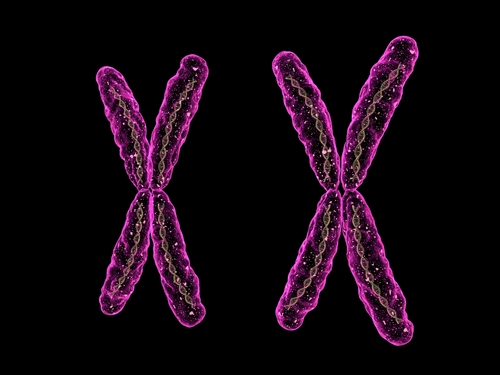Sex and the Olympics: Why gender shouldn't matter to sports medics
 There has only ever been one all-male modern Olympic Games — the very first one in Athens in 1896.
There has only ever been one all-male modern Olympic Games — the very first one in Athens in 1896.
Four years later in Paris, 22 women (out of a total of 997 athletes) qualified to compete. Numbers of female athletes have since risen and by the 2012 Summer Games in London, 44 percent of the participants were female.
With both men and women competing, sports governing bodies wished to draw a clear line between the two sexes. To prevent female imposters, the International Olympic Committee and the International Amateur Athletics Federation initially devised physical inspections of nude athletes before a panel of physicians.
The obvious inadequacy and controversy of this solution led to a new gender verification lab screening of inactive X chromosomes. The first athlete was genetically disqualified in 1967. However, these tests too have proven to be inadequate. It is not a simple case of checking for XX versus XY chromosomes to determine whether an athlete is male or female. People can have two XX chromosomes and be considered male but people with XY chromosomes may be insensitive to androgens (testosterone) and have no competitive advantage. They can be genetically male but appear to be (and are for all practical purposes) female. Sex chromosome abnormalities occur as frequently as 1 in 400 births.
For some athletes, constant gender tests can interfere with their career. South African middle-distance runner Castor Semenya was banned from competition by the IAAF while she underwent a humiliating series of tests before finally being cleared for competition as a woman. The results of the tests were never made public, but leaked reports say she was classified as intersex with characteristics of both sexes. Current testing is based on ranges of testosterone in the blood stream, with most females falling in a lower range than most males.
So if the IOC and the rest of science can’t figure out what a female is, how can we discuss sports medicine and injury in the context of gender? (Never mind try to define marriage as a union between a male and a female?) Possibly, many of the myths about what is good or bad for a female athlete are based on a misunderstanding of what a person is.
My approach to this dilemma in treating Olympic athletes and weekend warriors is the following: We all exist as athletes, more generally as people, on a gender continuum. While we may exhibit characteristics that are classically male or female, we are all male and female in differing proportions.
We should train, exercise and treat injuries with the same intensity and think of our differences in physiological terms, not in terms of gender. While the absolute strength of women is two-thirds of that of men, this should not lead to misconceptions. The relative strength differences between men and women are not appreciable as there is no significant difference based on cross-sectional area of muscle. It’s the relative size of the heart, lungs and blood volume that governs the limitations of athletes. While musculoskeletal shapes can differ in males and females, the composition of muscle fibers is identical, the relative proportion of fast- and slow-twitch fibers is identical and lactate accumulation in the blood occurs in the same fashion. All people benefit from strength training.
Athletes should be assessed as individuals. The intensity and volume of the training should be suited to their physical ability and strength conditioning. Training programs should meet individual goals, not preconceived goals based on ideas of gender. There is no evidence to suggest that women are any more likely to be injured during strength training than men, but proper instruction in technique is necessary for both men and women.
When we treat injured people and help them see themselves as athletes in training and not patients in rehab, they never ask if their gender will limit their recovery and it never does.
